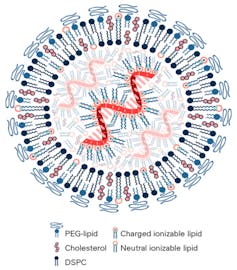That is despite having a well-thumbed handbook that editors should be well aware of by now.
The well-rehearsed game play is to make an exaggerated assertion, distort the science, stage a stunt for the cameras, spread fear and alarm and rev up the charity muggers needed to fund a huge multinational organisation.
The result is generally uncritical media attention, despite the sky stubbornly failing to fall, and a useful rattling of the collection tins.
The latest example is a spurious calculation by Greenpeace that New Zealand commercial fishing vessels destroyed up to 3000 tonnes of corals through bottom trawling in 2017-18.
The requisite media stunt was scattering of fake coral across Parliament’s lawn.
The seafood sector was not contacted for comment on this magicked figure before the story was uncritically published by Stuff.
Seafood NZ then requested the story be amended to reflect the following facts:
- Greenpeace sourced their 3000 tonnes of coral stat from a survey conducted in waters not comparable to New Zealand’s fisheries. Greenpeace’s analysis is based on higher density reef-building corals, not those found in colder New Zealand waters.
- As Greenpeace’s own media release said: “There was an estimated 6.4 tonnes of corals in the fleets’ nets, from NZ waters last year.” Not 3000 tonnes. Greenpeace also ignores the fact that 85 percent of the coral in nets is coral ‘rubble’. This is coral that has already died and disintegrated
- Over 90 percent of the NZ 200-mile EEZ has never been touched by bottom trawling
- In 2001, the New Zealand Government closed 17 underwater topographic features to all forms of trawling, known as Seamount Closures
- In 2007, the New Zealand Government with seafood industry support closed a further 1.1 million square km of seabed (close to a third of New Zealand’s EEZ) to bottom trawling and dredging, known as Benthic Protection Areas
- Together, BPAs and Seamount Closures banned bottom trawling in 32 percent of New Zealand’s EEZ, an area 14 times the size of New Zealand’s protected land area, and four times the size of New Zealand’s land area overall
- About 1.2 million square kilometres of seabed habitat is protected. This includes: 28 percent of underwater topographic features (including seamounts), 52 percent of seamounts (underwater mountains over 1000 metres in height) and 88 percent of active hydrothermal vents
- Annually, the deepwater trawl footprint covers a mere one percent of the EEZ, with the same areas being fished each year. This is actively monitored by Fisheries New Zealand
- The annual number of trawl tows has been declining since the 1990s for the same overall catch volumes, through improved efficiencies
The result was that the “Greenpeace good, fishing industry bad” coverage remained in place, albeit with comment from Fisheries New Zealand that refuted the coral claims and the addition of one paragraph from Seafood NZ at the tail of the story.
So much for balance.
The proposed National Plan of Action for Seabirds, 2020, aimed at reducing the incidental bycatch of seabirds in fisheries, drew similar exaggeration and negativity from Forest & Bird, which follows Greenpeace’s songbook.
There was no mention of the reduced seabird bycatch, as confirmed in the Ministry for the Environment’s Aotearoa stock take, the industry’s commitment to a pathway to zero bycatch, the extensive mitigation measures taken, and other environmental factors affecting the multitude of seabirds that breed in our waters.
That does not fit the narrative. And it is so much easier to carp, to demonise the fishing industry, rather than engage constructively.








